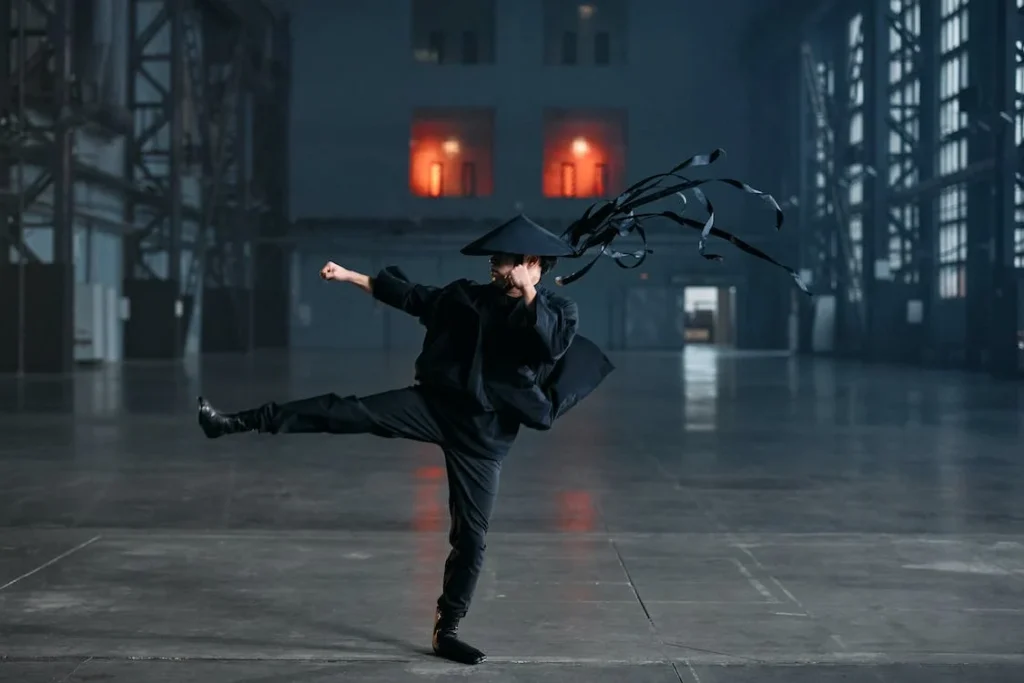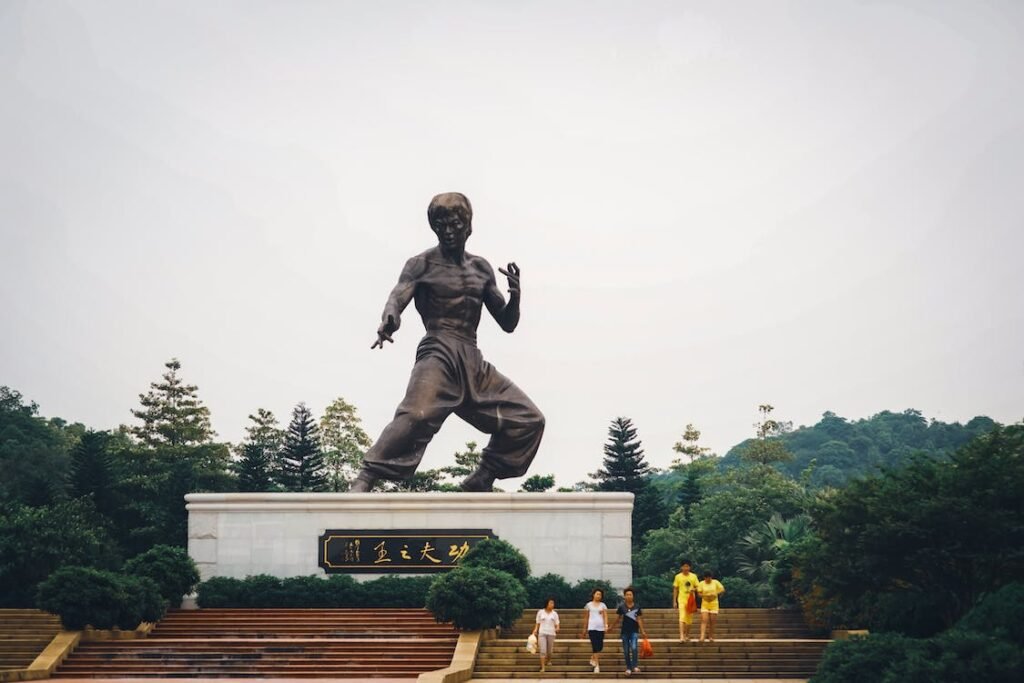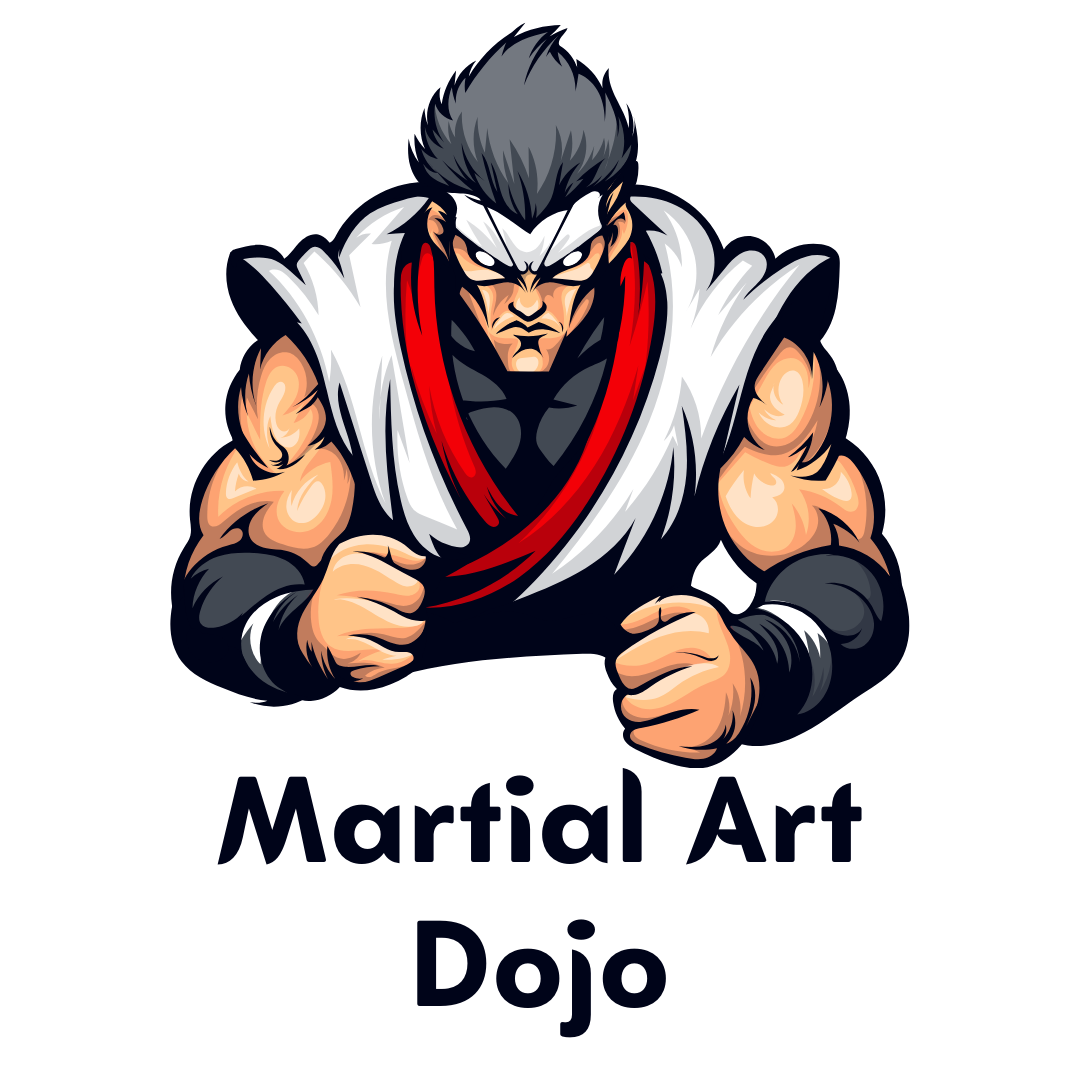Karate, with its thrilling kumite matches, exhilarating kicks, powerful punches, graceful katas and demanding physical conditioning, remains one of the most popular Asian martial arts in the world today. But few know of karate’s truly extensive history spanning over centuries and continents to become the global phenomenon it is today.

Contents
Introduction
- Karate encompasses a family of martial arts styles that originated from the Ryukyu islands in ancient Okinawa over 500 years ago
- It involves dynamic striking techniques using hands, elbows, knees and feet for self-defense and physical/spiritual development
- What began as indigenous Okinawan fighting methods called ‘te’ or ‘toudi’ assimilated Chinese and later Japanese influences over centuries
- By 20th century, karate was introduced worldwide by pioneering masters and adapted into myriad styles now practiced by over 100 million practitioners
- The below comprehensive historical account covers key origins in Okinawan martial arts, development and proliferation of styles, global spread through pivotal masters and competitive evolution, and predictions for the enduring legacy
Preceding Indigenous Fighting Traditions of Okinawa
The early history of karate is interwoven with ancient Okinawan and Chinese martial arts styles that preceded and influenced it.
As an independent island kingdom during medieval periods, a distinctive fighting approach using hands and feet for self-protection developed in native Okinawan culture referred to as ‘Te’, meaning ‘Hand’, or ‘Toudi’ meaning ‘Chinese Hand’.
Subjugation by Foreign Powers Lead to Secret Practice of Martial Arts
Due to Okinawa’s strategic location, it suffered repeated subjugation by Japanese samurai invaders in 14th century and later the Satsuma clan for over 250 years.
Okinawans were banned from bearing arms leading to secret practice of unarmed martial arts for self-defense by an oppressed populace. Hard training methods also aimed to defend against pirates frequenting the Chinese seas.
Chinese Influences Assimilate into Okinawan Fighting Styles
Cultural exchange through extensive overseas trade allowed Okinawans exposure to southern Chinese martial arts since the 14th century. Styles like Fujian White Crane, Five Ancestors Boxing, Tai Chi Quan and diverse Chinese kempo schools influenced native combat disciplines.
One origin story dates karate to 1609, when a Fujian province Chinese wanderer named Kushanku taught ‘Chuanfa’, meaning ‘Way of the Fist’ to Okinawans. Later, the style taught to Sakugawa Kanga by the Chinese diplomat Kusanku in 1756 formed a precursor of Shorin-ryu karate.
In 19th century, noted master Kanryo Higaonna extensively studied Chinese martial arts overseas for years. His teachings formed basis of notable Okinawan style Naha-te, passed down in 20th century by pupil Chojun Miyagi as Goju-ryu.
Thus, karate evolved from convergence of native Okinawan combat disciplines like Te/Toudi with imported Chinese kempo styles in the 18th and 19th centuries.
Development of Core Styles in Okinawa
By early 20th century, karate started taking more organized form as the prominent martial art in Okinawa owing to these key developments:
Origins of Core Styles from Early Predecessors
From the old self-defense focused styles called ‘te’ emerged more structured karate branches labeled ‘-te’ named after the Okinawan city they originated from:
- Naha-te: Favored circular joint locks and grappling moves from the hard kempo style taught by Kanryo Higaonna which later became Goju-ryu karate
- Shuri-te: Quick, linear hand techniques as practiced in the region’s Okinawan capital city which Gichin Funakoshi later developed into Shotokan karate
- Tomari-te: Synthesized both soft and hard techniques in a well rounded approach founded by pioneers like Matsumora and Oyadomari
Together, these formed the basis for development of modern karate styles in early 20th century.
Systematization by Influential Early Masters in Okinawa
Some key karate pioneers from the three cities that trained the first students formally include:
- Anko Itosu (1831–1915): Helped transform Okinawan te styles into modern karate by systemizing its teachings for introduction in Okinawan school curriculums
- Kanryo Higashionna (1853-1917): Preserved and taught Chinese kempo in Naha-te style dojo which was basis of Goju-ryu
- Sokon Matsumura (1805–1893) Nicknamed the ‘Bushi’ or warrior, he developed Shuri-te foundations that disciples expanded into Shotokan and Shorin-ryu
- Chojun Miyagi (1888 – 1953) Pupil of Kanryo Higaonna who founded the elite Goju-ryu in 1930 to honor his teacher’s principles and popularize karate in Japan
Through the efforts of these pioneers and their successors, karate adopted more disciplined training methods beyond its crude peasant self-defense roots involving kata practice, sparring (kumite) introductions, makiwara board striking and physical conditioning. This allowed its transition towards a structured martial art form.
Spread from Okinawa to Japanese Mainland
Originally referred simply as ‘toudi/tode’ in Okinawa, Gichin Funakoshi proposed adopting the ‘kara-te-do’ terminology in 20th century. The change signified ‘empty hand way’ – denoting the lack of weapons use.
Funakoshi introduced Okinawan karate to Japan by demonstrating it in 1922 at the National Physical Education Exhibition in Kyoto sponsored by the Japanese Education Ministry. This was the first public karate display on Japanese mainland.
Subsequently in the 1920s and 30s, Chojun Miyagi, Kenwa Mabuni and Choki Motobu built upon Funakoshi’s efforts to further popularize various schools of Okinawan karate throughout Japanese universities and capture public interest. This paved integration into Japanese culture over coming decades.
Funakoshi’s disciples thus helped establish Shotokan ryu as one of the first and most influential modern styles. Meanwhile Mabuni formulated the Shito-ryu style blending Itosu and Higashionna’s teachings he learned.
Global Spread of Karate Styles Through Key 20th Century Figures
With the foundations established in Okinawa and Japan, karate was ready to spread worldwide through these trailblazing karatekas starting 1950s onward:
Japanese Masters Introduce Major Karate Styles
| Style | Key Figure | Period | Derived From |
|---|---|---|---|
| Shotokan | Gichin Funakoshi | From 1930s | Shuri-Te roots |
| Goju-Ryu | Chojun Miyagi | 1930s | Kanryo’s Naha-Te |
| Shito-Ryu | Kenwa Mabuni | 1930s | Itosu & Higaonna’s teachings |
| Wado-Ryu | Hironori Otsuka | 1940s | Shotokan & Jujutsu |
| Kyokushin | Masutatsu Oyama | 1960s | Varied Influences |
- Other notable post-WWII Japanese styles include Shorinji-ryu, Zen Nihon Karate-do, Seido Juku Karate, Japanese Kempo etc largely derived from Funakoshi, Mabuni, Miyagi and Motobu’s early teachings.
- While the Okinawan karate focus was combatives, the Japanese karate branches expanded the art into more spiritual/sporting dimensions as well as modernizing the competition aspect
Global Proliferation to West from 1950s Onwards
Key senseis responsible for pioneering spread of karate internationally from 1950s include:
- Mas Oyama: Gave karate demonstrations in US and Europe in 1950s after training in several styles; created influential full contact kyokushin.
- Hidetaka Nishiyama: Key disciple under Shotokan founder Funakoshi and Nakayama who played major role in spreading karate in the West
- Teruyuki Okazaki: Shotokan master who relocated and taught extensively in United States from 1960s onward
- Hirokazu Kanazawa: Renowned disciple of Gichin Funakoshi brought recognizable Shotokan competition karate to Germany, Italy, USA and South America after WWII
- Peter Urban: Studied karate in Japan during military service in 1950s; instrumental in establishing early American east coast karate clubs and associations
Through trailblazing efforts of these and other pioneering senseis, karate gained worldwide popularity by 1970s and 80s.
Transition into Globalized Sport Karate Phenomenon

The accelerated spread of various styles created need for platforms for inter-style competitions and associations to govern the modern sport karate movement:
Beginnings of Global Tournaments from 1960s
- As karate spread in the West, sparring evolved with protection equipment, point systems and eventually inter-style sport karate tournaments emerged
- The 1st PKA World Series in 1974 became forerunner for World Karate Federation (WKF) standardized rules and tournaments
- Leading competitive early kumite star Steve Armstrong dominated tournaments worldwide through 1970s and 80s
- Japanese (JKF), European (EKF) and Pan-American Karate Federations formalized from 1960s-80s to govern tournaments
- Unified rules developed for scoring, weight divisions, time limits and safety gear
Olympic Debut at Tokyo 2020 and Paris 2024
- Competitive karate grew tremendously as a modern sport though its bids to be included as an Olympic event took decades of lobbying
- Karate featured prominently as a cultural showcase event at the 2020 Olympics in its homeland Japan
- It was finally inducted as an official Olympic sport for 2024 Paris Olympics after 2016 shortlisting
- Olympic karate competition will use updated WKF weight categories, match rules and electronic ‘Ippon’ scoring based on skill and effective technique over brute strength
Thus as traditional karate diversified into hundreds of styles globally, competitive karate evolved as a parallel sport governed by major federations and including world class showcases like the Olympics. But unifying themes of excellence, respect and discipline remain rooted in all branches retaining the original essence.
Most Pivotal Masters and Personalities in Karate History

As covered, the assimilation of Chinese, Okinawan and Japanese influences was vital in guiding karate’s transition from a crude peasant fighting art to the modern diverse martial arts phenomenon today through contributions of these notable karatekas:
Founders and Preservationists of Core Karate Doctrines
- Itosu Anko (1831–1915): Transformed Okinawan te styles into systematic karate taught in schools; pioneered its integration into education system
- Kanryo Higaonna (1853-1917): Preserved and passed down Chinese kempo principles forming basis of Goju-ryu karate
- Ankoh Azato (1828–1906): Early Shuri-te master from whom Gichin Funakoshi and Choki Motobu learned foundations formulated into Shotokan
- Chojun Miyagi (1888 – 1953) Founder of elite Okinawan Goju-ryu combining hard and soft techniques who played major role popularizing karate in Japan
- Sokon ‘Bushi’ Matsumura (1805–1893): Last head bodyguard of the Okinawan king whose Shuri-te teachings became basis for Shotokan and Shorin-ryu
- Kenwa Mabuni (1889–1952) Created Shito-ryu by combining his learning from early masters Itosu and Higoanna
Pioneers of Major Styles and Their Global Dissemination
- Gichin Funakoshi (1868–1957) The prime ‘Father of Modern Karate’ who introduced Okinawan art to Japan founding Shotokan style
- Mabuni Kenei: Son and successor of Shito-ryu founder Kenwa Mabuni, spread the style to Latin America and Europe from 1960s
- Mas Oyama (1923-1994) Introduced karate worldwide after 1952 US & Europe tours which led to founding the massively popular Japanese kyokushin style
- Keinosuke Enoeda (1935-2003) Key JKA disciple under Shotokan’s Funakoshi and instructor Nakayama who played big role in spreading karate across Europe and USA
- Hironori Otsuka (1892-1982) Creator of Wado-ryu karate-do integrating jujitsu with Funakoshi’s teachings who taught many notables like film star Yul Brynner
Early Sport Karate Stars Who Boosted Popularity
- Steve Armstrong (USA) Legendary point fighter unbeaten from 1969 to 1980 with over 400 championships attributed for kickstarting competitive karate phenomenon
- Weyland Aguilar (Venezuela) 5 Times World Karate Champion between 1982-88 renowned for his incredible speed and impeccable technique
- Luca Valdesi (Italy) 1984 WUKO World Champion noted as among first non-Japanese competitors to defeat Japanese national team members
- Tadashi Nakamura (Japan) Prolific early karate tournament champion particularly skilled in Kata, Kumite and weapons forms like Bo-Kata across North America
- Michael G. Foster (USA) All-time great US point fighter and world karate champion from 1980s onwards, labeled the ‘Muhammad Ali of Karate’
Through these leading masters, competitive stars and many more over 20th century, karate diversified into myriad popular styles across every continent while retaining traditional ethos.
Conclusion
In summary, karate has indeed traversed a remarkable journey given its relatively obscure origins in medieval Okinawa to becoming one of the pre-eminent martial arts and modern sports practiced by over 100 million students globally today.
Evolving tremendously from its early Pechin warrior fighting art roots on a small Pacific island, assimilation of Chinese and Japanese influences guided karate’s transition into the systematic disciplined budo and do way of life. Its spread spearheaded by pioneering masters produced many variant styles in the 20th century.
Meanwhile the competitive resurgence and debut on the ultimate world sporting stage at the Olympics heralds a new era keeping karate relevant for 21st century enthusiasts pursuing it for self-improvement, holistic wellbeing and sporting dreams alike!
- Read More on History of Fighting.
- Read Next on Karate Terminology and Glossary: A Comprehensive Overview
FAQs
- What are the origins of karate?
- Answer: Karate originated from indigenous Okinawan martial arts known as ‘te,’ influenced by Chinese kempo, and later evolved into a more systematic art.
- How many styles of karate exist?
- Answer: There are over 100 styles of karate today, with major ones including Shotokan, Goju-Ryu, Shito-Ryu, Wado-Ryu, and Kyokushin, each with its unique characteristics.
- Who were the most influential masters in karate history?
- Answer: Pivotal masters include Funakoshi, Oyama, Nakayama, Miyagi, Mabuni, Motobu, as well as pioneering instructors from the U.S. and Europe, such as Trias, Urban, and Bell.
- When did karate become a global sport?
- Answer: Competitive sport karate with inter-style tournaments gained popularity in the 1960s and grew significantly in the 70s and 80s, marked by figures like Steve Armstrong.
- How did karate become an Olympic sport?
- Answer: After failed attempts, karate featured in Tokyo 2020 and was formally included in the Olympic program for Paris 2024, adapting WKF point scoring for mainstream appeal.
- What are the main training techniques in karate?
- Answer: Core training involves kihon (basics), kata (forms), kumite (sparring), self-defense applications, and supplementary conditioning for a well-rounded skill set.
- What is the importance of katas in karate?
- Answer: Katas are choreographed fight patterns preserving combat techniques, principles, and traditional knowledge, offering a historical and practical foundation for practitioners.
- How does karate differ from other martial arts styles?
- Answer: Unlike jujitsu, taekwondo, or kung fu, karate emphasizes fast linear hand and elbow strikes integrated with hard kicking maneuvers, reflecting its unique Okinawan-Chinese roots.
- What values are central to the philosophy of karate-do?
- Answer: Core values include respect, self-improvement, perseverance, humility, integrity, and a high regard for the sanctity of life, fostering a holistic approach to personal development.
- Is karate only about fighting techniques?
- Answer: No, while combat application is prominent, regular karate training offers holistic benefits such as improved cardiorespiratory health, flexibility, discipline, stress relief, confidence, and self-actualization.
